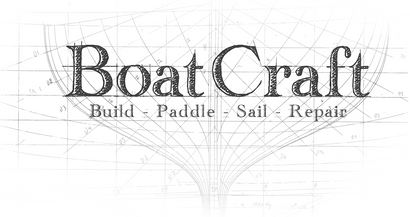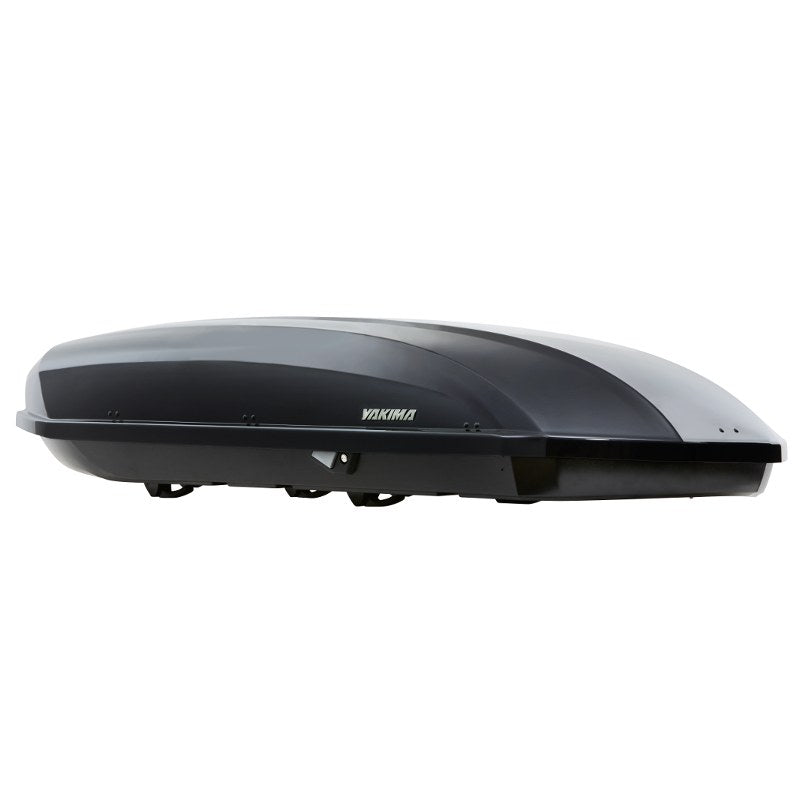Call or Text us at 587-855-1304
Menu
-
- Home
-
Paddle Sports
-
Resin and Fibreglass
-
Marine
-
Transport
-
Specials
- blog
-
- 587-855-1304
- Login
-
CAD

Call or Text us at 587-855-1304

Understanding and Choosing Fiberglass Cloth
February 13, 2024 7 min read
Fiberglass cloths are used to reinforce natural materials, in composite laminations with Kevlar or Carbon Fibre, or as the only material in a construction. This is a relatively complicated material to understand because it comes in different weights, weaves, strand counts and manufacturers, so as BoatCraft we have chosen to carry the types of cloth that are best for the widest range of purposes versus specialty cloths that are intended for specific purposes. The weight of the cloth is measured in ounces by square yard (in some cases by square meter), so a 6-ounce fiberglass cloth weighs 6 ounces per square yard with out any resin in the cloth. The weaves that we currently carry are e-glass, s-glass, biaxial, roving, twill and mat, each of these weaves has different purposes and strengths. The strand counts within the weave is part of the different names mentioned above, but in general the more threads in the cloth the heavier the cloth will be when saturated with epoxy and this will affect the transparency or clarity of the cloth in clear finished marine applications. When fiberglass is used in composite laminations, the fiberglass is generally the outside layer, with core materials like carbon fiber, Kevlar, honey comb core, foam core, epoxy board, Coosa or plywood. The fiberglass is a harder exterior surface that is easy to repair in comparison to carbon fibre or any other composite, and when fiberglass is applied correctly it will become transparent so the repairs are not visible.
It is also valuable to mention that the strength of the fiberglass cloths in single layers is not as strong as multiple layers and multiple directions of the weave of a cloth, this is why multiple layers of thinner cloth will be stronger than one layer of thicker cloth or mat. One layer of 24-ounce fiberglass roving is not as strong as 4 layers of 6-ounce fiberglass e-glass, the 4 layers of cloth will be significantly stronger, thinner and lighter than the single layer of roving. Lighter weight fiberglass cloths are easier to cut, shape and saturate with epoxy when comparing to 1708 (17-ounce biaxial fiberglass) or 24-ounce roving. The thinner cloths are also able to contour complex shapes and forms, where the thicker cloths and mat cannot do complex shapes.
Another crucial factor when working with fiberglass is the “sandwich” style constructions that are required to have strength. This means that multiple layers of fiberglass in combination with structural core materials (plywood or foam, etc.) need to be reinforced with fiberglass on both sides of the core material. The preconception of most builders is that fiberglass only needs to be applied to the exterior side of the material for strength, fiberglass reinforcement also needs to be done on the inside of the surface to stop the direction of force, which is inward not outward. Even one thin layer of fiberglass on the inside surface of a trailer wall, or on the underside of a trailer or boat floor will greatly increase the strength and eliminate flex in the material. When we consult people in their trailer, boat hull and camper constructions and repairs to do patches on the exterior and interior so that the load and flex of the surface is shared. This will make repairs permanent without any instability is to layer material on the top side and bottom of the core material. Composite constructions are undoubtably the most durable and long-lasting way of building or repairing any project.
Fiberglass cloths meet certain specific purposed depending on weight and weave, so if the builder is looking to clear finish the object the weight of the cloth will determine the clarity of the finish. For most clear applications, 6-ounce cloth or lighter when saturated with epoxy will be completely transparent. The cloths that we regularly stock for clear finishing is 6-ounce, 4-ounce, 1.5 ounce and .73-ounce e-glass for application over natural materials like wood or composites like carbon fibre. The cloths that are heavier than 6 ounce will lose clarity as they are saturated and will hold more micro air bubbles, so the finish is never as clear. As mentioned before, multiple layers of cloth are stronger than single layers, so multiple layers of 6-ounce cloth will remain transparent if you apply multiple layers. It is the thickness of the weave and the saturation of the cloth that defines clarity, so many layers of thin cloth can be applied to have a clear finish but very strong surface. For example, the standard for a cedar strip canoe is one layer of 6 ounce on the outside of the hull and two layers on the inside of the hull. The flex and impact of the hull is inward, and therefore, the fiberglass has to be stiff on the inside to resist this direction of force. Naturally the finish on a cedar strip canoe should be clear finished and varnished for the longest durability and lifespan.
The industry standard fiberglass when using general purpose resin (polyester resin) is 1.5 ounce chopped strand mat (CSM.) This material is random fiberglass fibers sprayed with silica and pressed through a roller to make it a flat sheet. This material is not woven, it is random direction fibers so it cannot do complex contours or shapes. Chopped strand mat is almost always the least expensive material to work with, making it common in industry and in constructions that do not have weight requirements. Chopped strand mat unless specified, is not compatible with epoxy because the silica coating that bonds the fibers together is resistant to epoxy. The epoxy does not cure hot enough to melt away the coating on the fibers, where as Polyester Resin curing temperature is hot enough to remove this coating and makes it a part of the “waxed” finish cure. Chopped strand in large scale manufacturing is actually sprayed onto a gel coat in a mold, which makes the coating full of small bubbles and delaminations. When hand applying chopped strand mat you have to remove as much of the fine air bubbles as possible because these are all potential areas for delamination or “crazing” spider cracking in chopped strand. Unlike woven fiberglass, chopped strand does not have a consistent weave or texture so it will hold air and not be saturated easily so aluminum ribbed rollers and other de airing tools are required for ideal saturation. Chopped strand mat also requires more polyester resin to be fully saturated, with each coat thickness of 3-4mm thick, and multiple coats required for strength. This ultimately accumulates to the over all weight of an object, for example, a fiberglass canoe weighing around 65+ pounds and a woven cloth and epoxy canoe weighing 50 pounds or less.
Specialty cloths like 1708 biaxial fiberglass and 24-ounce roving are used for heavy strengthening applications and in mold making because the cloth is very strong and thick as one single layer. 24-ounce roving is commonly used on the inside of fiberglass canoe hulls because it is so stiff in comparison to the chopped strand mat exterior layer. This material does very well to reinforce hot tubs, showers and pools because it can resist the heavy weight of water, but hot tubs are stationary and do not have to be moved regularly unlike boats and trailers. 1708 is biaxial because the weave of the cloth is 45 degrees and sown onto a mat backing. This cloth is great for boat transom reinforcement and automotive fenders, because it can handle impact damage, vibration and flex. The challenge to working with thicker cloths is they absorb more resin (epoxy or polyester) and have very aggressive texture which has to be overlayed with other fiberglass or body fillers to have a smooth finish. 1708 or Roving can be used as a core material inside a composite lamination or as a stand-alone layer, but overall weight and resin consumption make it not suitable for most fiberglassing projects and repairs.
The two large woven fiberglass cloth types are e-glass and s-glass, and smaller custom weaves and weights. E-glass is used for boat constructions, clear finishing, thin lamination and reasonable cost material. S-glass is “structural glass” which has been woven with more strands per weave and more weave per square foot. The s-glass is 30% stronger than e-glass, but it does not saturate completely transparent because of the number of strands in the weave. The s-glass is ideal for light construction high strength applications where paint or gelcoat are being applied to the surface. Both the e-glass and s-glass are 6 ounces per square yard, s-glass is generally more expensive than e-glass. 9-ounce fiberglass cloth, and many other weighs and widths are available but they are used for specific types of laminations in certain manufacturers. In general, this makes the cloth very expensive in comparison to chopped strand mat and e-glass.
With this information the builder can be more aware of the materials as well as the best way to construct to save money in the build. Always consider the importance of using quality core materials like appropriate plywoods, foams and composite cores before moving to choosing fiberglass and resins. The fiberglass and resin will be chosen after the builders decides what the core material is, because some resins are not compatible with coated like pressure treated plywood, polyester resin will dissolve foam, etc, so the external materials have to be compatible with the core materials. There is no way for a construction to have a cheaper core material with stronger external materials, the external material is bonding to the core material, so if the core material fails the external cannot resist this failure. The better the core material the less material is required on the exterior and interior, generally one layer outside and two layers inside are sufficient with a proper plywood or foam core. When budgeting for a build or repair that a poor core material will cost the builder in external layers of fiberglass and epoxy (which is generally more expensive than a proper foam or plywood) or a good core will cost far less in fiberglass, but now the correct cloth has been described.
“When budgeting for a build or repair that a poor core material will cost the builder in external layers of fiberglass and epoxy (which is generally more expensive than a proper foam or plywood) or a good core will cost far less in fiberglass, but now the correct cloth has been described.”
Leave a comment
Comments will be approved before showing up.
Subscribe
Sign up to get the latest on sales, new releases and more …
